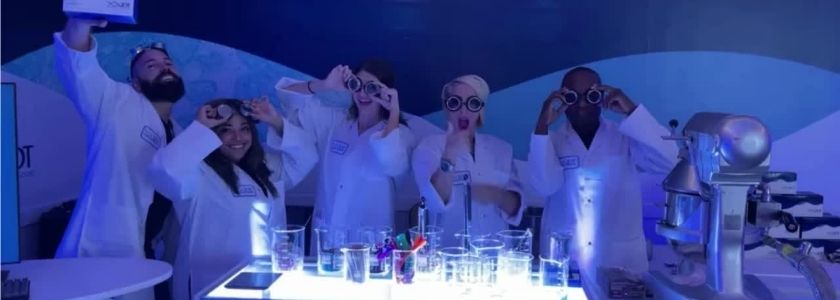AGBT 2022: A return to discovery and collaboration

AGBT—Advances in Genome Biology and Technology—is the top global genome science and technology conference. After a short hiatus and one postponement, the event was back on and held this year in Florida.
AGBT has long been an important event for IDT, and we were thrilled to be back at the event this year in person to discuss our xGen™ NGS technologies and solutions. Mirna Jarosz, IDT’s Director of Global Market Development and Applications, attended the event and recently talked about what she experienced.
What was most exciting about AGBT this year?
AGBT this year felt like a return to what it used to be known for—exciting new technologies that are unveiled at the meeting for the first time.
What were some of the most exciting things that you learned at the conference?
Sequencing costs have stopped dropping as dramatically as they had been, but multiple new sequencing technologies introduced at AGBT this year promise to reinvigorate the sequencing world and drive costs down further.
Spatial and single-cell transcriptomics have merged into a powerful new tool with multiple high-resolution spatial platforms emerging.
What are some trends that you see taking place in this line of science?
If we really get the price drops promised by new technologies, we could see the emergence of whole genome sequencing (WGS) for more routine tumor profiling.
The new high-resolution spatial platforms could significantly advance our understanding of tumor microenvironment. In particular, we could get a better understanding of why some tumors exclude T-cells, hopefully leading to ways to counter that and make immunotherapies more broadly effective.
How does IDT fit into all of this?
A significant drop in sequencing costs would be enabling for researching early cancer detection and minimal residual disease monitoring (MRD), but we will hit barriers due to inherent error rates and library prep efficiency (i.e., a physical limitation of how many mutant copies are actually present in the sequencing library). This is where the high conversion rate and error correction of a library prep like IDT’s xGen™ cfDNA and FFPE library prep kit can really shine.
This was our first year at AGBT after the Swift acquisition. How did things seem different in light of the acquisition?
So many people had no idea our portfolio had gotten so broad! Customers who were used to getting best-in-class hybrid capture and adapter products from us were really excited that we now have leading RNA-Seq, methyl-seq, and amplicon sequencing products as well.
What new technology does IDT have to offer?
IDT has streamlined our hybrid capture panel offerings, enabling high-quality panels to be delivered in as little as three weeks with an NGS Functional Test Report, or in as little as five days without the test report. This latter offering is particularly exciting as researchers investigate how rapidly personalized panels could be deployed to understand tumor progression and therapy response (e.g., MRD).
Networking is a huge deal in the genomic industry—what did you learn from networking at the event and how will it inspire your work in the future?
It was amazing to finally have an in-person reunion with the sequencing community after two and a half years. As always, chatting over meals or drinks with genomic researchers was inspiring—learning how they were excited about how the new technologies they were hearing about could transform their work. It was also great to talk to those actually developing these new technologies, as each and every one of them expressed a need for oligos and genomic solutions that are the core of what we do at IDT. I’m excited that IDT can play a key role in bringing innovative new technologies to genomic researchers, as we have been doing since the earliest days of NGS.
We are hearing a lot about automation now. What are some key takeaways from the event around this developing topic?
NGS workflows can be challenging, and the genomics field certainly hasn’t been immune to the unusually tight job market that exists today. We are hearing not only about the more expected benefits of improved consistency one obtains from automating workflows, but also about how it can make a lab more resilient to staffing gaps and turnover.
How do you see technology changing to assist those who are working with precious samples?
Low-plex assays have always posed a challenge when precious samples are limited. This has been one of the great benefits of NGS for molecular profiling of tumors—rather than carving off multiple tumor sections for a wide variety of different low-plex assays, one can look at hundreds of genes and multiple types of variants at once. Spatial genomics has the potential to bring a similar revolution to tumor pathology—rather than needing multiple sections for low-plex IHC and FISH assays, one could get a deeper and broader view of what is happening with 100s of transcripts and proteins with single-cell, 3D resolution all at once.
For research use only. Not for use in diagnostic procedures. Unless otherwise agreed to in writing, IDT does not intend these products to be used in clinical applications and does not warrant their fitness or suitability for any clinical diagnostic use. Purchaser is solely responsible for all decisions regarding the use of these products and any associated regulatory or legal obligations.


 Processing
Processing
